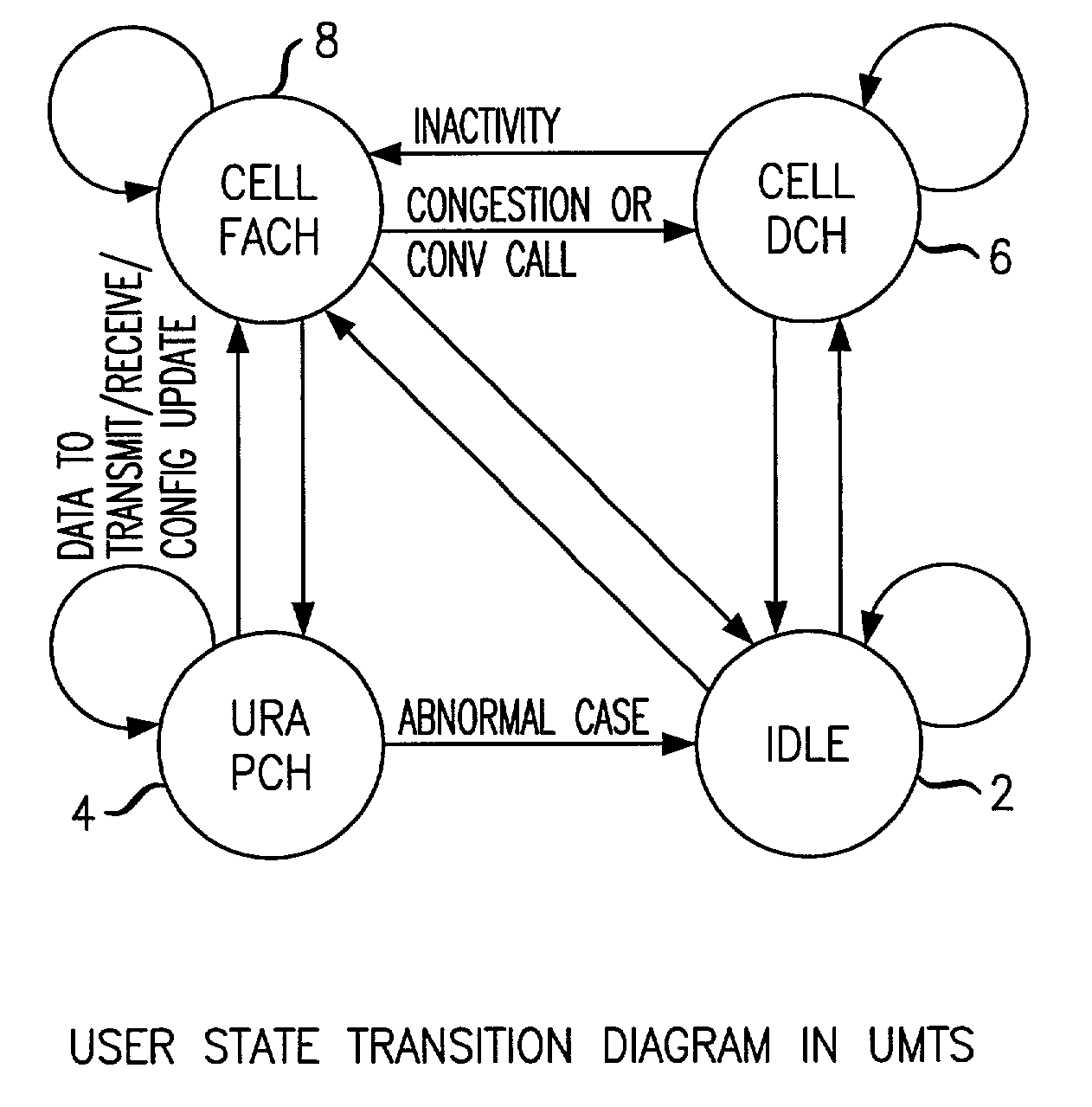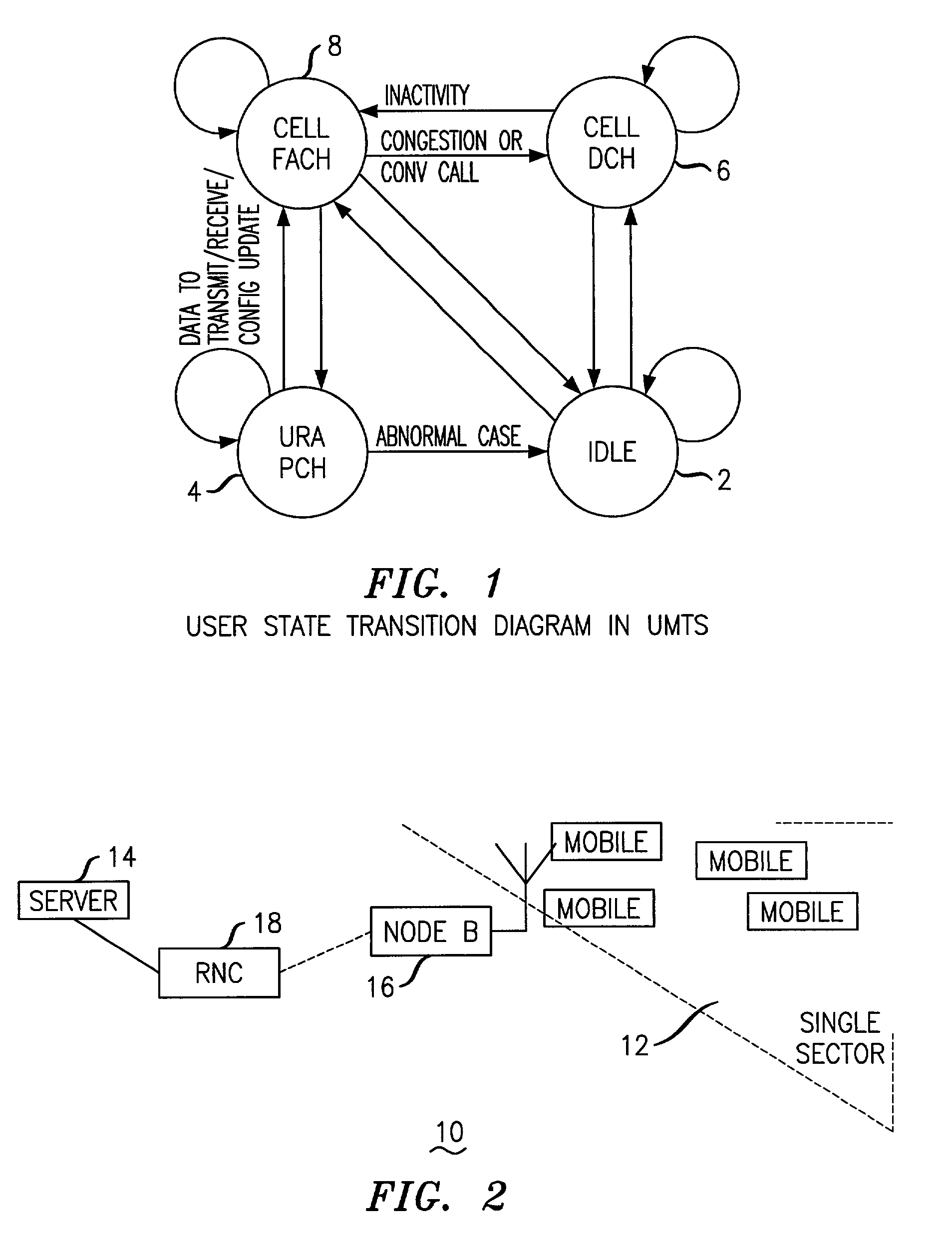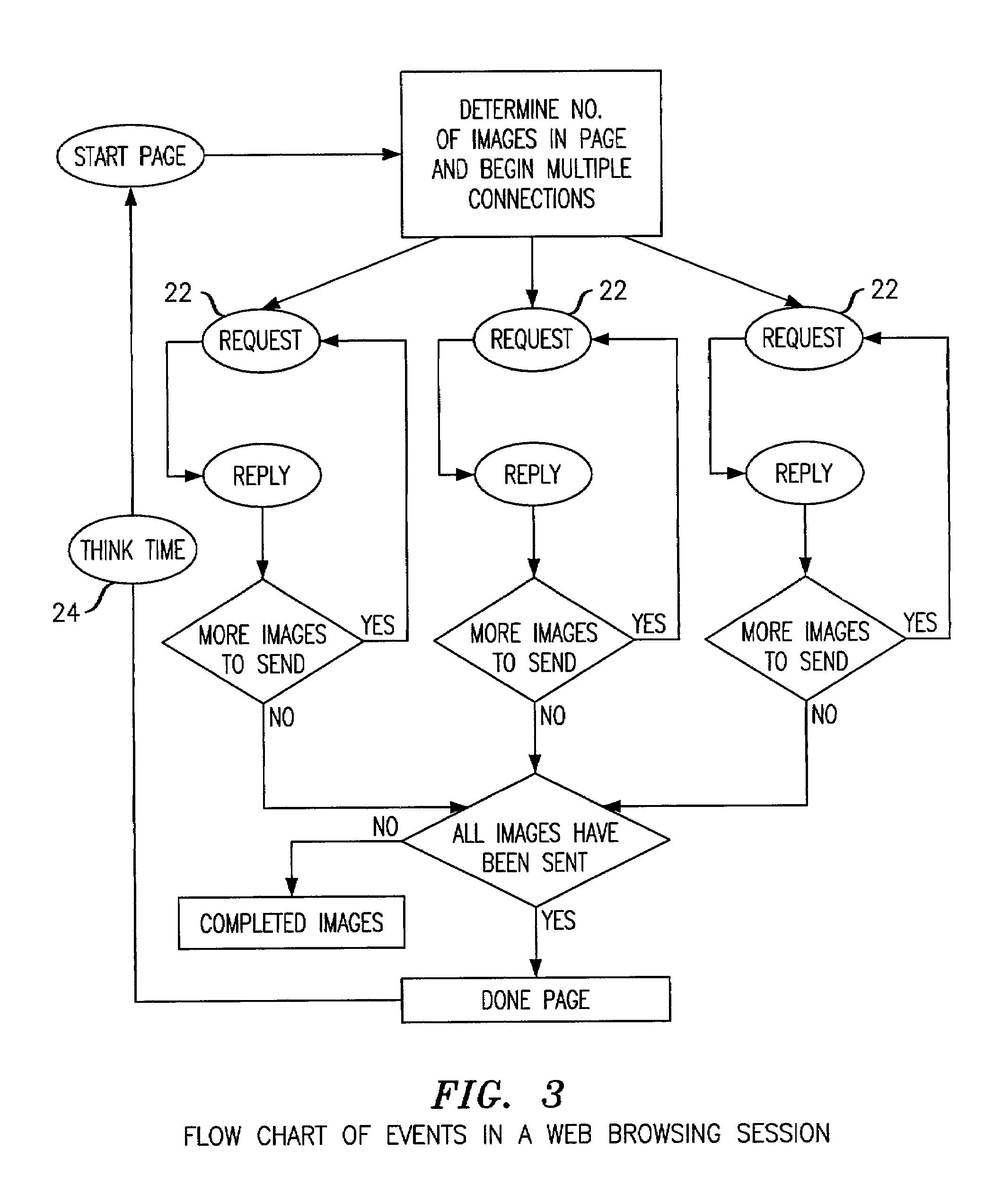Dynamic DCH allocation methodology for packet data services in a wireless communications system
a wireless communications system and dynamic allocation technology, applied in the field of wireless communications systems, can solve the problem of small number of dchs available, and achieve the effect of high data rates and not affecting the quality of services
- Summary
- Abstract
- Description
- Claims
- Application Information
AI Technical Summary
Benefits of technology
Problems solved by technology
Method used
Image
Examples
Embodiment Construction
[0020]Although the present invention is described with respect to UMTS wireless communication systems, it would be understood the invention is also applicable to other types of communications systems including 3G1X and the like. Prior to introducing the invention, a brief discussion regarding the states of a packet service user in a UMTS networks is presented.
[0021]Referring to FIG. 1, a state transition diagram is shown for a packet service user in a UMTS network. As shown, one state in the diagram is the state (2) Idle: A UE begins in the idle mode after being switched on. In the idle mode it selects the PLMN that it wants to associate with and is capable of listening on the broadcast channel. However, RRC functions have not been carried out that would enable it to transmit on the RACH or DCH. Another state (4) is URA_PCH: In this state the user is listening on the paging channel. It does not have permission to use the RACH or the FACH. The UE can act on RRC messages received on t...
PUM
 Login to View More
Login to View More Abstract
Description
Claims
Application Information
 Login to View More
Login to View More - R&D
- Intellectual Property
- Life Sciences
- Materials
- Tech Scout
- Unparalleled Data Quality
- Higher Quality Content
- 60% Fewer Hallucinations
Browse by: Latest US Patents, China's latest patents, Technical Efficacy Thesaurus, Application Domain, Technology Topic, Popular Technical Reports.
© 2025 PatSnap. All rights reserved.Legal|Privacy policy|Modern Slavery Act Transparency Statement|Sitemap|About US| Contact US: help@patsnap.com



